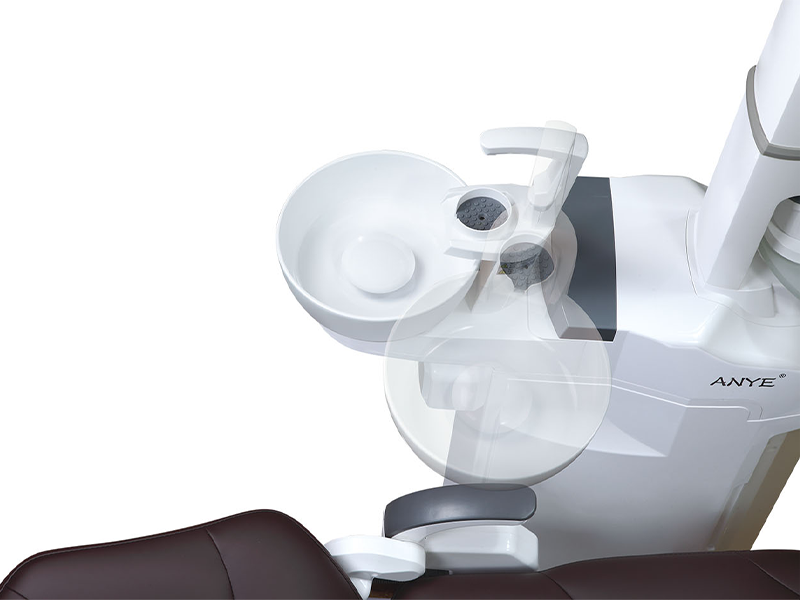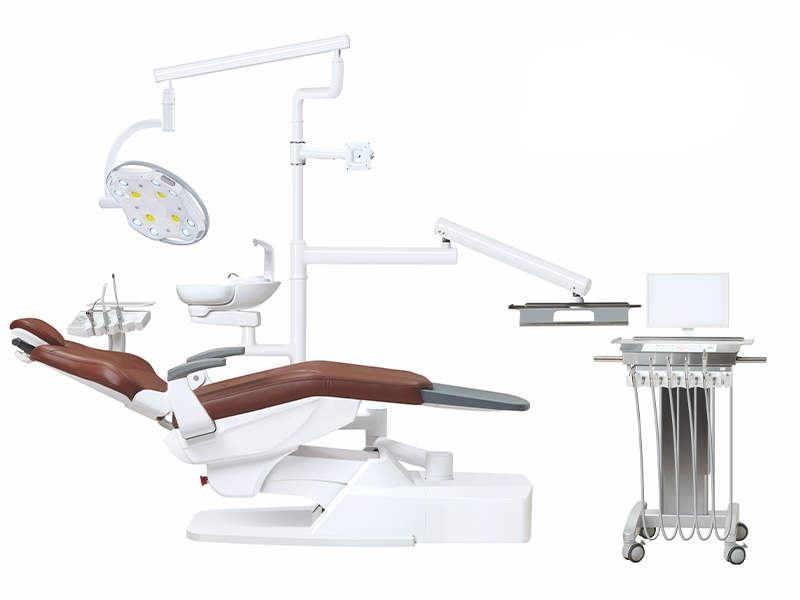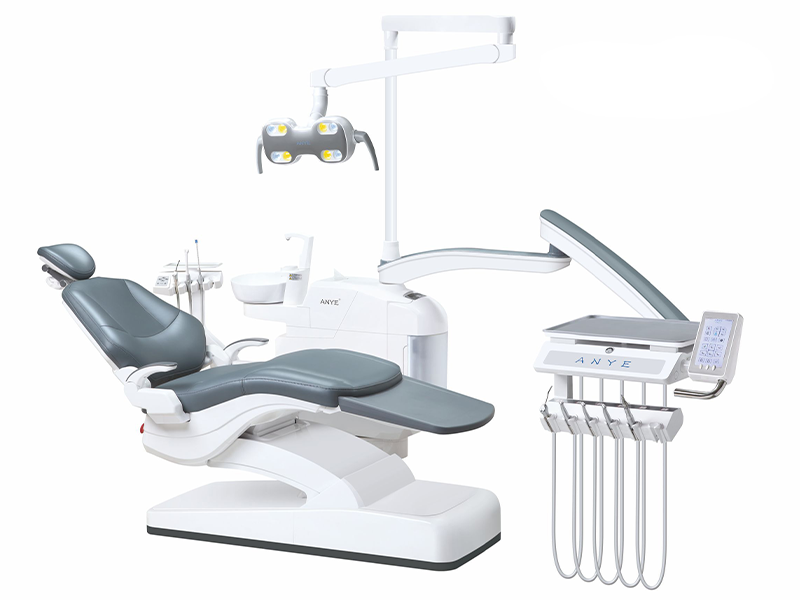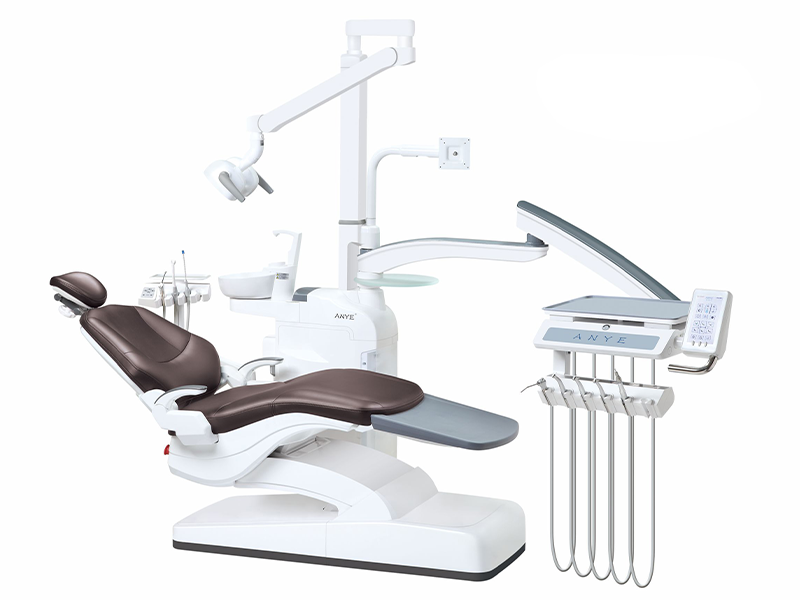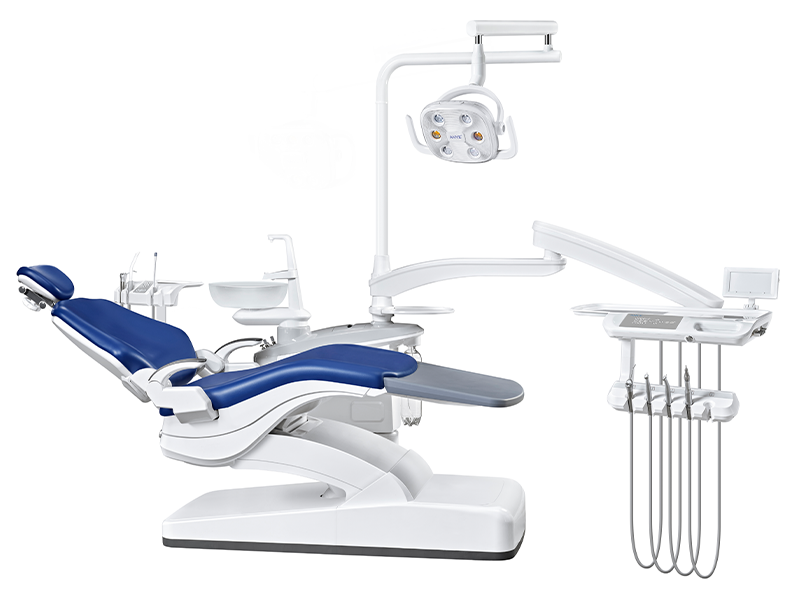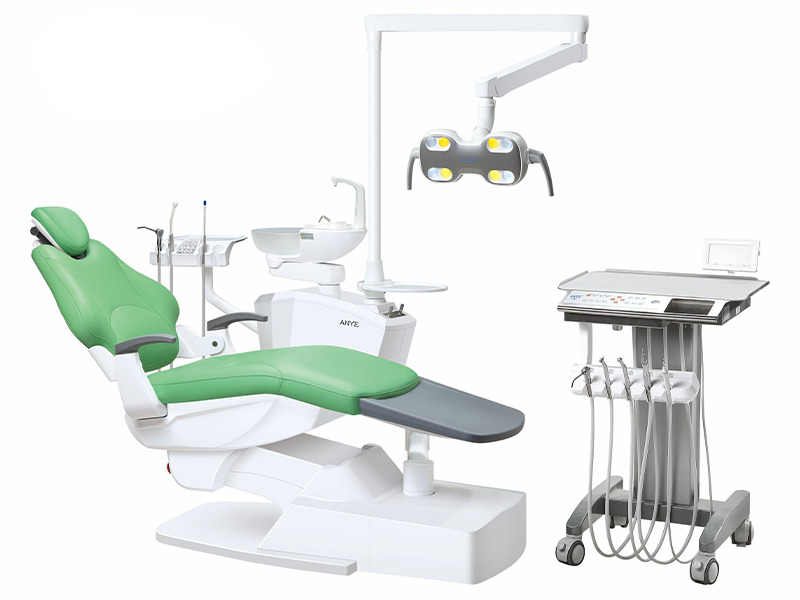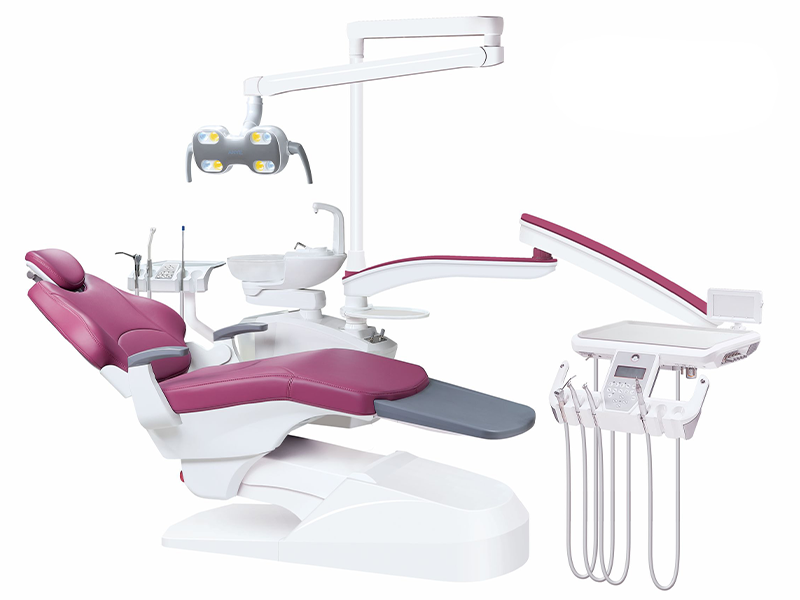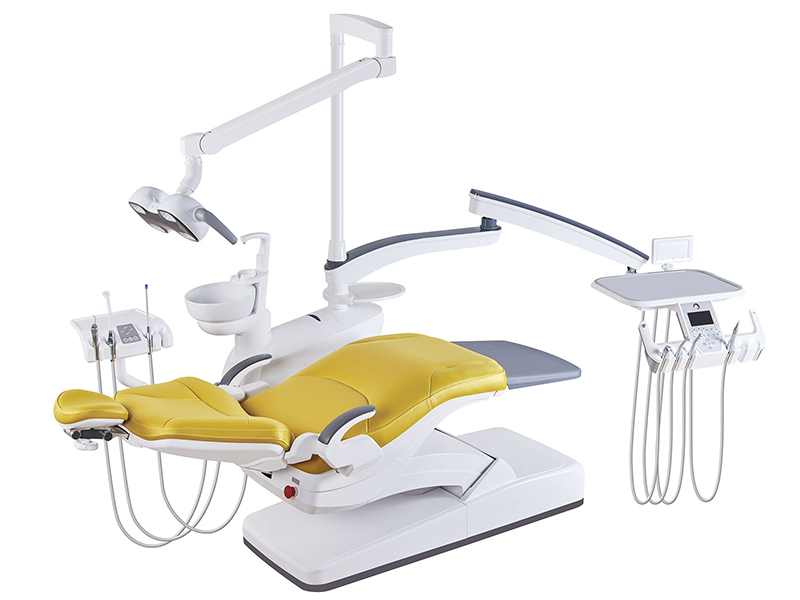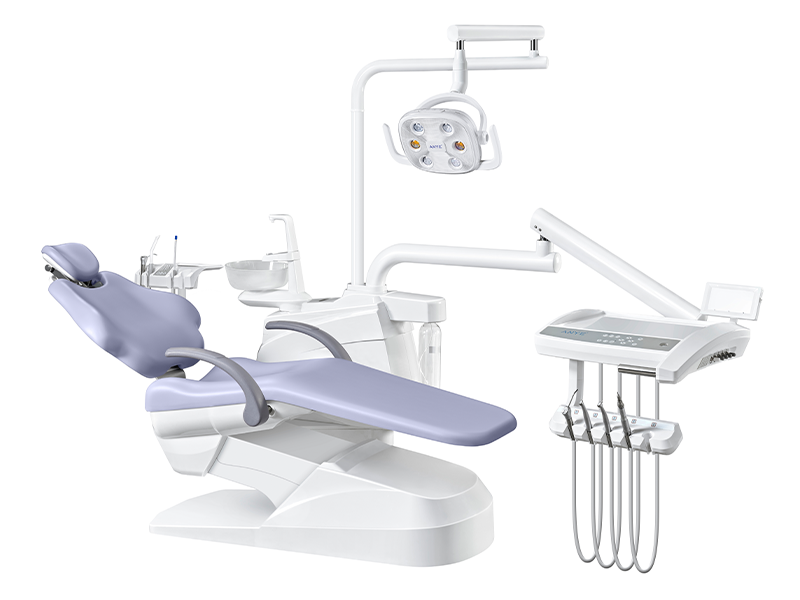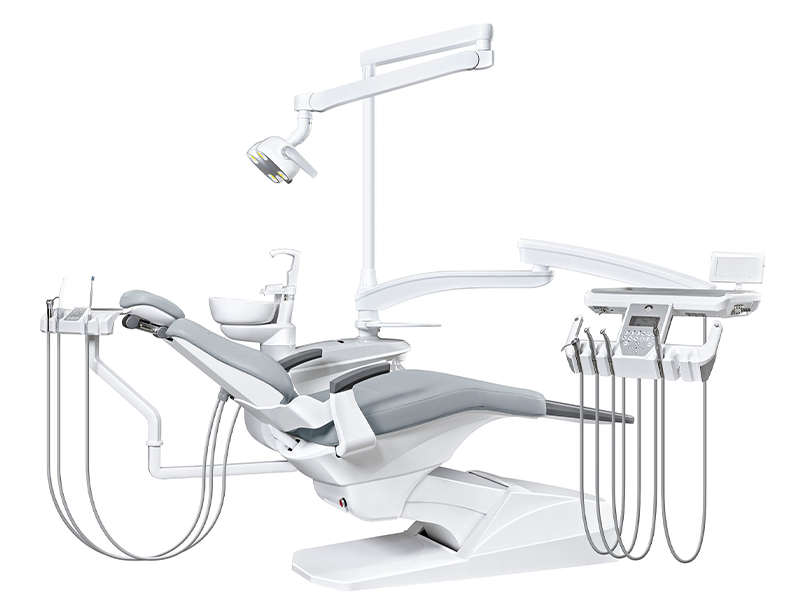Dental spittoon and cuspidor systems have evolved dramatically in response to infection control challenges, with contemporary designs reducing bacterial contamination by up to 44.9x compared to traditional fixtures. As of April 2025, advanced self-cleaning technologies have transformed these once-basic receptacles into sophisticated infection control systems that automatically manage patient expectoration while minimizing cross-contamination risks. For procurement specialists evaluating dental chair options, understanding these innovations is essential for maintaining compliance with increasingly stringent sanitation protocols.
Certified to ISO 13485 standards and deployed across practices in 60+ countries, Anye Dental's spittoon systems feature automated 6-second bowl rinse cycles and removable components compatible with high-level disinfection protocols. Manufactured in a 15,000+ sqm facility utilizing precision Kuka robotic fabrication and laser-cutting technologies, these systems integrate with dental chairs supporting up to 240kg patient loads while maintaining full CE compliance for medical device hygiene standards. The technical specifications reflect a fundamental shift in dental equipment design, balancing operational efficiency with enhanced pathogen control.
Historical Evolution of Spittoons and Cuspidors
The history of dental spittoons dates back to the 1800s when dental practices lacked modern amenities like electricity and plumbing. Patients would rinse and spit into brass bowls attached to chair arms, which required manual emptying and presented significant hygiene challenges. These early receptacles, while functional, created considerable cross-contamination risks as they collected saliva, blood, and treatment debris without adequate sanitization options.
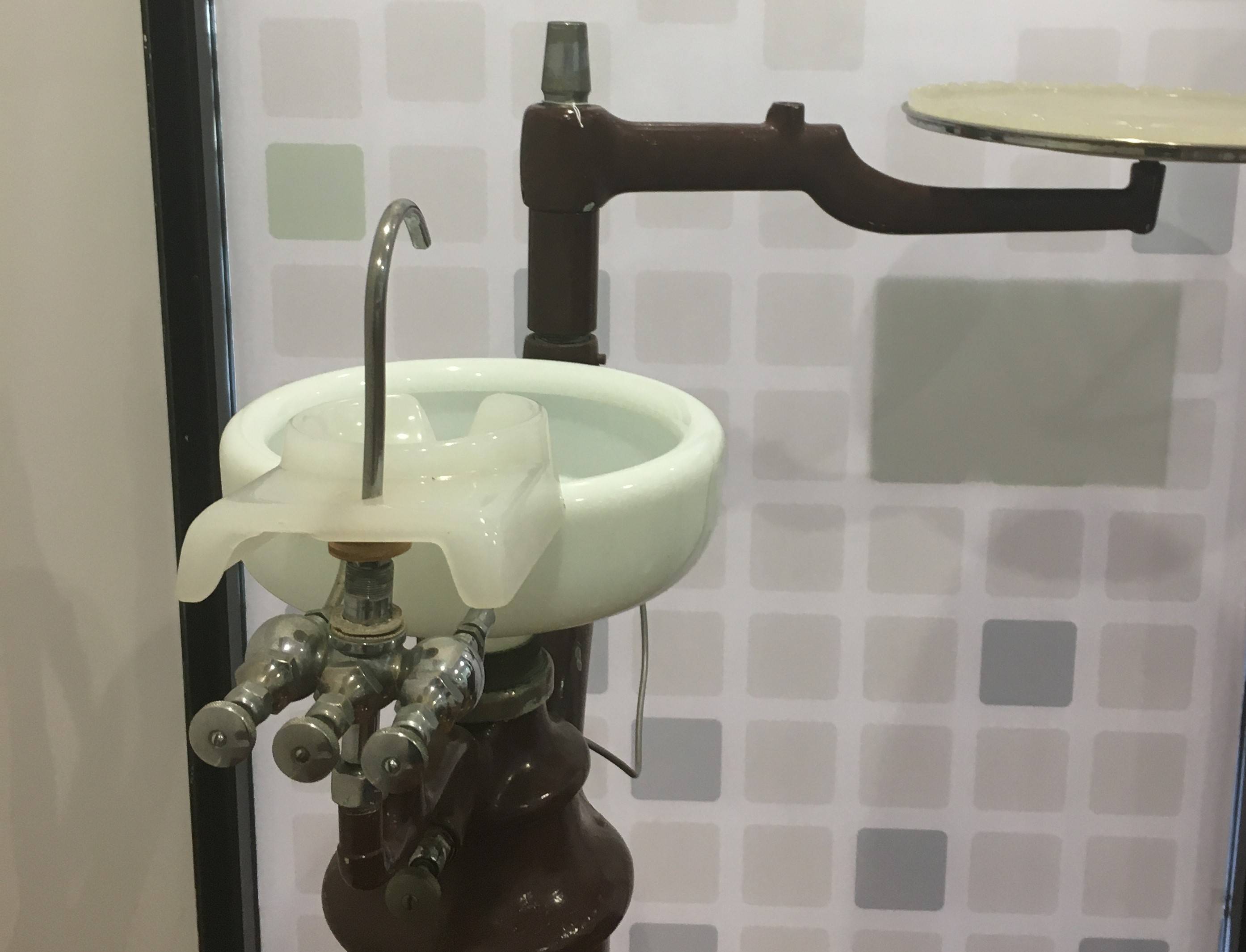
A significant advancement came in 1867 with the introduction of the Whitcomb Fountain Spittoon, described as "beautifully enamelled in imitation of rosewood". This innovation featured a rudimentary self-cleaning mechanism that directed smaller particles into a waste pipe while preserving larger items like gold fillings. However, adoption remained limited due to plumbing constraints in many dental practices of the era.
The technological progression from these manual systems to today's automated solutions reflects broader advancements in cross-infection control knowledge and dental equipment engineering, though experts have noted that traditional cuspidors have never provided a completely effective solution for managing biological waste.
Current Challenges in Traditional Systems
Traditional spittoon and cuspidor systems present significant infection control challenges that modern dental practices must address. Research has documented that cuspidors harbor some of the highest bacterial concentrations in dental settings, with contamination levels reaching up to 44.9x10³ CFU/mL. This alarming statistic highlights the potential risk these fixtures pose in transmitting pathogens between patients if not properly maintained.
The COVID-19 pandemic has heightened concerns about aerosol transmission risks associated with patient expectoration. Traditional spittoons create opportunities for droplet dispersion during rinsing and spitting, potentially compromising the safety of both patients and dental staff. These concerns have accelerated the industry's shift toward alternative systems that minimize aerosol generation.
From an operational perspective, traditional cuspidors present ergonomic inefficiencies that impact workflow and staff comfort. Dental professionals must frequently reposition themselves to accommodate patient rinsing, contributing to musculoskeletal strain during procedures. Additionally, the maintenance requirements of traditional systems—including rigorous cleaning between each patient—create substantial time pressures in busy practices.
Modern Design Innovations
Automated Hygiene Features
Today's advanced spittoon systems incorporate self-cleaning mechanisms that significantly reduce cross-contamination risks. Anye Dental's AY-215B5 and AY-215C5 specialized sterilization dental chairs feature automated bowl rinse cycles that thoroughly flush the spittoon in just 6 seconds between patients. These systems utilize programmed water jets that eliminate debris and sanitize surfaces without manual intervention.

Modern designs have evolved to integrate seamlessly with high-volume evacuation (HVE) suction systems for efficient waste management. The AY-215C Series chairs feature enhanced suction capabilities that minimize aerosol dispersion during procedures while maintaining optimal infection control. These integrated systems use dedicated lines for spittoon drainage that prevent backflow contamination, a significant advancement over traditional setups.
Ergonomics and Workflow Optimization
Contemporary spittoon systems prioritize reduced patient movement during procedures, enhancing both comfort and treatment efficiency. Anye's AY-215A Series positions cuspidors at optimal angles that require minimal patient adjustment, allowing clinicians to maintain proper working postures throughout treatments. This thoughtful positioning has contributed to the 80% of dentists who report improved ergonomics when working with modern systems.
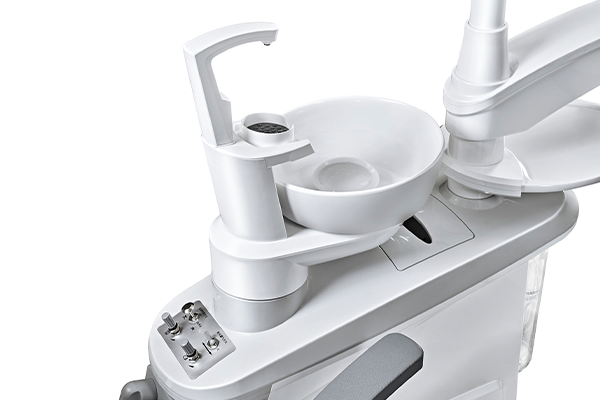
The AY-215B Series features dual-sided access configurations that facilitate better staff positioning and improve clinical workflow. These designs eliminate the need for practitioners to work around cuspidors, creating more efficient treatment environments particularly valuable during complex procedures like implants where precise positioning is critical.
Material Improvements
Modern spittoon systems utilize stain-resistant porcelain or Corian surfaces that resist bacterial adhesion and simplify cleaning processes. Anye Dental's proprietary materials maintain their pristine appearance while withstanding daily exposure to dental materials, medications, and disinfectants. These non-porous surfaces prevent microbial accumulation and support stringent infection control protocols.
A key innovation in contemporary designs is the incorporation of easily removable components for thorough sterilization. The AY-215C5 model features detachable spittoon bowls and drainage assemblies that can be fully sterilized between patients, providing substantially enhanced infection control compared to fixed systems. This modularity ensures that all patient-contact surfaces can be properly sanitized according to current best practices.
Sanitation Standards and Best Practices
Compliance with Infection Control Protocols
Adherence to established infection control standards is essential for dental practices utilizing spittoon systems. Anye Dental's products are designed to meet RKI guidelines, which represent some of the most stringent requirements for medical device hygiene globally. These standards mandate specific cleaning frequencies, disinfection methodologies, and validation processes that ensure patient safety.
All Anye dental units undergo rigorous testing to verify compliance with ISO 13485 specifications for medical devices and CE certification requirements, confirming their suitability for clinical environments. These certifications validate that the equipment meets internationally recognized benchmarks for quality, safety, and infection control effectiveness.
Recommended Cleaning Products
For optimal maintenance of spittoon and cuspidor systems, manufacturers recommend specific cleaning agents formulated for dental applications. Products such as Orotol Plus and MD 555 cleaner are particularly effective for suction systems and spittoons, as they target biofilm formation without damaging sensitive components.
Anye Dental's maintenance guidelines specify using EPA-approved disinfectants with documented efficacy against a broad spectrum of pathogens including enveloped viruses. The company's 2025 infection control protocols emphasize the importance of following manufacturer-specific instructions for contact times and application methods to ensure complete sanitization.
Daily Maintenance Guidelines
Preventing debris accumulation requires adherence to structured daily maintenance protocols. Anye recommends a three-phase cleaning process that includes pre-cleaning to remove visible contaminants, disinfection with appropriate agents, and final rinsing to eliminate residual chemicals. This comprehensive approach ensures that spittoon systems remain hygienic throughout the treatment day.
For practices utilizing Anye's specialized sterilization dental chairs (AY-215B5 and AY-215C5), additional guidelines include routine waterline management to prevent biofilm formation. These maintenance procedures should be documented in accordance with regulatory requirements to demonstrate compliance with infection control standards during practice inspections.
Benefits of Going Cuspidor-Free
Cost Reduction
Transitioning to cuspidor-free dental setups offers significant financial advantages for practices. Studies show potential savings of approximately 10% on equipment costs when eliminating traditional spittoons from dental chair configurations. These savings stem from reduced initial purchase costs and lower ongoing maintenance expenses associated with spittoon systems.
Practices implementing cuspidor-free solutions also benefit from decreased expenditure on consumables such as plastic cups and specialized cleaning detergents. Anye Dental's analysis indicates that a medium-sized practice can reduce disposable product usage by approximately 15,000 items annually when transitioning to alternative rinsing systems, creating substantial cost efficiencies.
Time Efficiency
The operational impact of removing cuspidors from dental workflows is considerable, with research indicating time savings of approximately 90 seconds per patient. These efficiency gains result from eliminating patient rinsing routines and reducing room turnover requirements between appointments.
Over the course of a typical practice day, these incremental time savings accumulate to enable either increased patient capacity or reduced scheduling pressure. Anye Dental's case studies demonstrate that practices implementing their cuspidor-free AY-215A Series chairs experience average productivity increases of 12-15% within the first six months after installation.
Environmental Impact
Modern dental practices increasingly prioritize sustainability, making the reduced waste generation associated with cuspidor-free systems particularly appealing. By eliminating disposable cups and minimizing water usage, these configurations significantly decrease a practice's environmental footprint.
Anye Dental's 2025 sustainability report highlights that their cuspidor-free designs reduce water consumption by approximately 36,000 liters annually in a typical three-chair practice compared to traditional spittoon systems. This conservation aspect aligns with growing patient preferences for environmentally responsible healthcare providers.
Comparative Analysis: Spittoons vs. Suction Systems
| Feature | Spittoons | Suction Systems |
|---|---|---|
| Hygiene Standards | Requires frequent cleaning; risk of cross-contamination; bacterial counts up to 44.9x10³ CFU/mL | Automated disinfection; lower contamination risk; closed-system waste management |
| Patient Comfort | Familiarity with rinsing and spitting; psychological comfort for some patients | Reduced aerosol exposure; touchless operation; minimized movement during procedures |
| Maintenance | Manual cleaning required after each patient; high effort; daily disinfection protocols | Integrated cleaning solutions; low daily effort; scheduled maintenance less frequent |
| Cost | Higher equipment costs; ongoing consumable usage (cups, disinfectants); greater water consumption | Lower long-term costs; reduced consumable needs; eco-friendly operation with decreased utility expenses |
Future Trends in Spittoon & Cuspidor Systems
The future of dental spittoon technology is increasingly focused on touchless operation capabilities that enhance infection control. Anye Dental's research division is developing sensor-activated systems for their 2026 AY Series that will eliminate the need for patient contact with spittoon surfaces, further reducing cross-contamination risks. These advanced systems will incorporate motion detection and voice-activated controls to create truly hands-free environments.
Sustainability considerations are driving the integration of eco-friendly materials and resource-efficient processes in next-generation dental equipment. The upcoming AY-215 Series models will feature recycled components and biodegradable spittoon liners that maintain rigorous hygiene standards while reducing environmental impact. These innovations reflect the industry's growing commitment to sustainable healthcare practices.
Enhanced patient experience remains central to evolving spittoon designs, with manufacturers like Anye prioritizing ergonomic workflows and comfort features. The company's product roadmap includes advanced cushioning systems and personalized positioning options that improve patient comfort during extended procedures while maintaining optimal hygiene standards. These developments recognize that patient satisfaction increasingly influences practice success in competitive markets.
Conclusion: Integrating Modern Spittoon Systems into Practice
The transition from traditional to advanced spittoon and cuspidor systems represents a significant advancement in dental practice infection control, with documented improvements in three critical areas: bacterial load reduction (up to 44.9x10³ CFU/mL decrease), workflow efficiency (90-second time savings per patient), and resource conservation (36,000 liters annual water reduction in typical practices).
Procurement specialists evaluating options should prioritize systems with: (1) automated disinfection cycles, (2) removable components compatible with high-level disinfection, (3) integration with high-volume evacuation systems, and (4) compliance with RKI and ISO 13485 standards. These features collectively minimize cross-contamination risks while optimizing clinical workflows.
Anye Dental's AY-215 Series offers configurations ranging from the entry-level A3 model to the specialized C5 sterilization-focused unit, each engineered to specific clinical requirements. The technical specifications include compatibility with standard 4-hole tubing connections, adjustable water flow rates between 50-200ml/minute, and non-porous surface materials tested for resistance to common dental disinfectants.
For detailed technical specifications or to schedule an equipment consultation with certified specialists, visit Anye Dental's infection control resource center or contact our technical division for personalized guidance.

